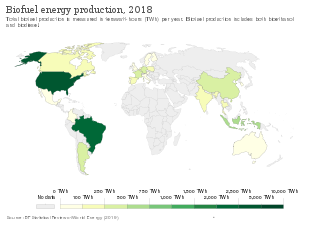Related Research Articles
From 1947 to 2017, the Indian economy was premised on the concept of planning. This was carried through the Five-Year Plans, developed, executed, and monitored by the Planning Commission (1951-2014) and the NITI Aayog (2015-2017). With the prime minister as the ex-officio chairman, the commission has a nominated deputy chairman, who holds the rank of a cabinet minister. Montek Singh Ahluwalia is the last deputy chairman of the commission. The Twelfth Plan completed its term in March 2017. Prior to the Fourth Plan, the allocation of state resources was based on schematic patterns rather than a transparent and objective mechanism, which led to the adoption for the Gadgil formula in 1969. Revised versions of the formula have been used since then to determine the allocation of central assistance for state plans. The new government led by Narendra Modi, elected in 2014, announced the dissolution of the Planning Commission, and its replacement by a think tank called the NITI Aayog.

The Korea Forest Service is an independent agency specializing in forestry that is overseen by the South Korean Ministry for Food, Agriculture, Forestry and Fisheries. It is charged with maintaining South Korea's forest lands. The current minister is Kim Jae-Hyun. The headquarters of the agency is located at the Daejeon Government Complex.
The Ministry of Food Processing Industries (MOFPI) is a ministry of the Government of India responsible for formulation and administration of the rules and regulations and laws relating to food processing in India. The ministry was set up in the year 1988, with a view to develop a strong and vibrant food processing industry, to create increased employment in rural sector and enable farmers to reap the benefits of modern technology and to create a surplus for exports and stimulating demand for processed food. The ministry is currently headed by Pashupati Kumar Paras, a Cabinet Minister.

The Ministry of New and Renewable Energy (MNRE) is a ministry of the Government of India, headed by current Union Cabinet Minister Raj Kumar Singh, that is mainly responsible for research and development, intellectual property protection, and international cooperation, promotion, and coordination in renewable energy sources such as wind power, small hydro, biogas, and solar power.

The IBSA Dialogue Forum is an international tripartite grouping for promoting international cooperation among these countries. It represents three important poles for galvanizing South–South cooperation and greater understanding between three important continents of the developing world namely, Africa, Asia, and South America. The forum provides the three countries with a platform to engage in discussions for cooperation in the field of agriculture, trade, culture, and defence among others.

The GSDP at constant (2011–12) Prices for the year 2018-19 is estimated at ₹850,000 crores as against ₹490,134 crores for 2015-16 indicating a growth of 11.61%. Per Capita Income at current prices increased to ₹122,376 from ₹108,163 in 2015-16 registering a growth of 13.14%.

The use of biofuels varies by region. The world leaders in biofuel development and use are Brazil, United States, France, Sweden and Germany.

India.gov.in is the Indian government’s web portal for citizens. It presents information resources and online services from government sources, accessible from a single point. It is also known as the National Portal of India.

Lakshkerala State Horticulture Mission is a registered society set up under the Travancore Cochin Literary Scientific & Charitable Societies Registration Act, 1955 to implement the National Horticulture Mission program, a centrally sponsored scheme, introduced during the financial year 2005-2006. This scheme envisages an end to end development of the horticulture sector covering production, post harvest management, processing and marketing.

The National Health Mission (NHM) was launched by the government of India in 2005 subsuming the National Rural Health Mission and National Urban Health Mission. It was further extended in March 2018, to continue until March 2020. It is headed by Mission Director and monitored by National Level Monitors appointed by the Government of India.Rural Health Mission (NRHM) and the recently launched National Urban Health Mission (NUHM). Main program components include Health System Strengthening (RMNCH+A) in rural and urban areas- Reproductive-Maternal- Neonatal-Child and Adolescent Health, and Communicable and Non-Communicable Diseases. NHM envisages achievement of universal access to equitable, affordable and quality health care services that are accountable and responsive to the needs of the people.
Soil governance refers to the policies, strategies, and the processes of decision-making employed by nation states and local governments regarding the use of soil. Globally, governance of the soil has been limited to an agricultural perspective due to increased food insecurity from the most populated regions on earth. The Global Soil Partnership, GSP, was initiated by the Food and Agriculture Organization (FAO) and its members with the hope to improve governance of the limited soil resources of the planet in order to guarantee healthy and productive soils for a food-secure world, as well as support other essential ecosystem services.
The National Centre for Cold-chain Development (NCCD) is an autonomous think tank body established by the Government of India with an agenda to positively impact and promote the development of the cold-chain sector in the country. NCCD was registered under the Society Registration Act, 1860 and given sanction by the Union Cabinet of India on 9 February 2012 in a session chaired by the country's Prime Minister.
Rashtriya Uchchattar Shiksha Abhiyan (RUSA) is a holistic scheme of development for higher education in India initiated in 2013 by the Ministry of Education, Government of India. The centrally sponsored scheme aims at providing strategic funding to higher educational institutions throughout the country. Funding is provided by the central ministry through the state governments and union territories (UT), which in coordination with the central Project Appraisal Board will monitor the academic, administrative and financial advancements taken under the scheme. A total of 316 state public universities and 13,024 colleges will be covered under it.

The Indian Institute of Horticultural Research (IIHR) is an autonomous organization acting as a nodal agency for basic, strategic, anticipatory and applied research on various aspects of horticulture such as fruits, vegetable, ornamental, medicinal and aromatic plants and mushrooms in India. The institute has its headquarters in Bengaluru, Karnataka, India and is a subsidiary of Indian Council of Agricultural Research (ICAR), New Delhi, under the Ministry of Agriculture, India. It recently has been ranked 1st for the combined years 2019-20 and 2020-21 by the ICAR.

The National Academy of Agricultural Sciences (NAAS) is a Government of India funded agency, established in 1990, is a research platform in the fields of crop husbandry, animal husbandry, fisheries and agro-forestry. It acts as a research base for agro-scientists to formulate their advice to the policy makers in discussion with the agricultural and agro industrial communities. The Academy is located at the National Agricultural Science Centre Complex, Pusa, in New Delhi, India.

Telangana is one of the fastest-growing states in India posing average annual growth rate of 13.90% over the last five years. Telangana's nominal gross state domestic product for the year 2020-21 stands at ₹12.05 lakh crore. Service sector is the largest contributor to the Telangana's economy with a share of about 65% in the year 2018-19. Growth in services has largely been fuelled by IT services with the State holding leading position in IT & ITeS in the country in terms of production and exports.

The Sagarmala Programme is an initiative by the Government of India to enhance the performance of the country's logistics sector. The programme envisages unlocking the potential of waterways and the coastline to minimize infrastructural investments required to meet these targets.

The East Coast Economic Corridor (ECEC) is India’s first coastal economic corridor covering 2500 km of India's coastline, to be developed with the help of the Asian Development Bank (ADB). The ADB is to invest $500 million in infrastructural development of the project. Since late 2013, ADB has been supporting studies on transport corridors in India. Phase 1 of the ECEC is Visakhapatnam-Chennai Industrial Corridor (VCIC) which had been approved by the ADB board in October 2016. The ECEC running along the entire east coast of India from Kolkata to Kanyakumari, is a multimodal, regional maritime corridor that can play a vital role in unifying the large domestic market, as well as integrating the Indian economy with the dynamic global value chains of Southeast and East Asia. It would play a crucial role in the Government of India’s (GoI) Make in India campaign and also supports the port-led industrialization strategy under the Sagar Mala initiative and the Act East Policy by linking domestic companies with the vibrant global production networks of East and Southeast Asia.
National Action Plan for Climate Change (NAPCC) is a Government of India's programme launched in 2008 to mitigate and adapt to the adverse impact of climate change. The action plan was launched in 2008 with 8 sub-missions. The plan aims at fulfilling India's developmental objectives with focus on reducing emission intensity of its economy. The plan will rely on the support from the developed countries with the prime focus of keeping its carbon emissions below the developed economies at any point of time. The 8 missions under NAPCC are as follows:
The Indo-Israeli Agriculture Project (IIAP) is a bilateral partnership established in 2006 between Israel and Indian governments. India has chosen Israel as a G2G level strategic partner in the field of agriculture. It was established in cooperation with National Horticulture Mission, National Horticulture Board and Indian States Horticulture Departments, and Israel's Agency for International Development (MASHAV) and CINADCO which provides developing countries with Israel's experience in development and planning.
References
- ↑ Sanjeev Chopra/S. Baskar. "Farming in the age of e-trading - Business Line". Thehindubusinessline.com. Retrieved 2013-04-07.